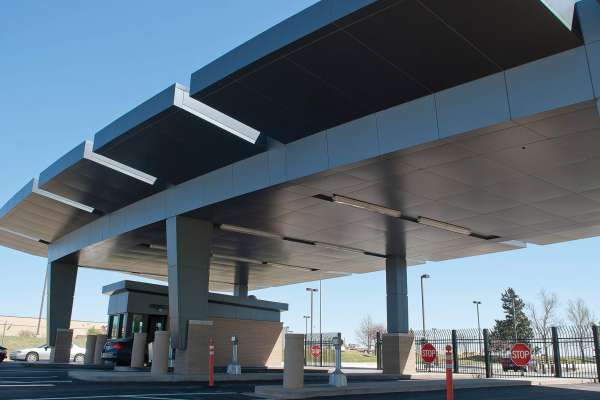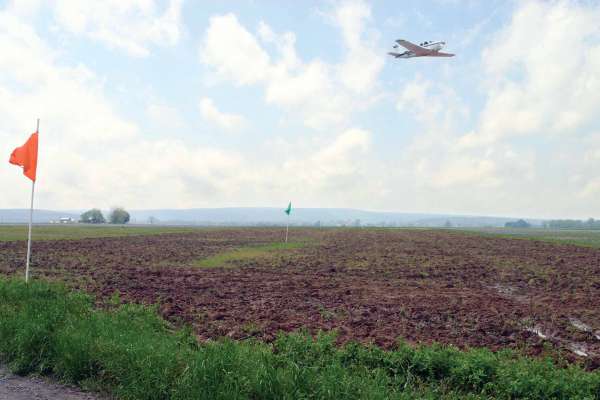Garver has designed eight new airports in the past decade
Today's new airports have to meet a complex network of industry, land, environmental, design, funding and agency regulations. They require grant applications, a feasibility study, site selection, master and airport layout plans, an environmental impact analysis, design and construction. And don't forget about the instrument approaches, height zoning plans, noise analysis and public support.
Few engineering firms have the opportunity to transform an undeveloped site into an operating airfield. New greenfield airports don't wrestle with expansion constraints and non-standard designs, and an open field is a fresh canvas to create a custom airfield and a unique gateway to the community.
Over the past decade, Garver has been hard at work designing a gallery of one-of-a-kind, new airports.
"Our aviation teams take new airports through the maze of requirements, from the feasibility study all the way through implementation, planning, design, construction management and commissioning," said Aviation Team Leader Blake Roberson, PE, who has worked on four new airports in Arkansas and Texas. "It's very rewarding to see an empty field converted into a safe, thriving airport that supports business, industry and community growth."
Garver's aviation team has more than 50 staff members in Texas, Oklahoma, Arkansas, Alabama, Tennessee and Florida. In addition to experience, Garver's project teams offer aviator wisdom—engineers with active pilots" licenses. Garver's pilots have spent more than 9,000 hours in the cockpit and understand how airports should operate.
"Even before we begin design, we're already thinking through pilot and layout efficiencies," said Aviation Team Leader Frank McIllwain, PE, who has managed two new airport projects. "We're picturing how aircraft will land, taxi and take off. There are many moving parts to coordinate, and our experience as pilots helps us design airports that run well."
In 2007, Alabama opened its first federally funded new airport in 15 years. With Garver's assistance, two cities and a county came together to build Centre-Piedmont-Cherokee County Regional Airport. The local governments combined resources and secured FAA funding, purchased more than 300 acres and constructed a 5,500-foot runway that is bringing aviation traffic and economic benefits to the area.
"It's enjoyable working on a new airport from scratch," said Aviation Team Leader Ryan Reed, PE, who is in the middle of two new Alabama airport projects. "All airport aspects meet current standards and regulations, and the airfield can be designed with creativity and future growth in mind."
In a second project, the Alabama Department of Transportation Aeronautics Bureau hired Garver to update the Statewide Airport System Plan. After conducting a feasibility study and site identification study for Clarke, Choctaw and Marengo counties, a plan has developed to create Southwest Alabama Regional Airport and replace two local, constrained airports. The Environmental Assessment, Capital Improvement Program and Airport Layout Plan are now underway.
Wetumpka-Elmore County Regional Airport is still in its infancy phase. Garver is providing site assessment and facility requirement services to investigate the potential for a new airport.
Garver also helped Saline County replace its constrained facility with Arkansas' first new general aviation airport in 10 years. Located on a reclaimed bauxite pit, Saline County Regional Airport opened in 2007 and accommodates midsize jets on its 5,000-foot runway.
Garver is now in the middle of two new Arkansas airport projects—Conway Municipal Airport and Delta Regional Airport. The Conway airport began moving dirt in April, and Garver plans to employ several green features to reduce energy consumption and environmental impact. These include designing shorter haul distances for earthwork, LED airfield lighting and landside LEED structural aspects.
Delta Regional is expected to open in 2013. Garver has been with the airport authority from the very beginning, helping two cities and two counties form an airport authority, develop a business plan and secure matching funds for federal projects. Garver's services even extended into working out farm leases and mineral rights on new authority-owned land and developing a line of credit based on existing airport values. The 5,000-foot runway will serve general aviation aircraft and large corporate jets.
"Garver is the perfect firm for new airport development because we have the full range of needed experience and services," McIllwain said.






Share this article